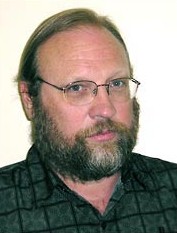What do we make of Hemingway’s observation that every story, if we take it far enough, ends in a death? I attribute this observation to Hemingway to give the idea a beginning, to start a narrative. Of course this convention of attributing ideas to named persons, is another means of fighting off death, of keeping the accounts of immortality in order, of enforcing the rule that this idea should not go in the coffers of an animal with the symbolic label “Henry Richards” but to the symbolic being, “Ernest Hemingway” who now is no longer an animal, has no bones a molderin’ in the grave. That bone pile in Ketchum Ohio belonged to the biggest game animal that Hemingway ever shot, although he authored no story about the hunt or the kill. He slew, of course, his animal self.
This essay starts by assigning a starting point to the idea the essay itself addresses, but you, dear reader, are anticipating the essay’s end, its wrapping up, at best its coda containing a codex (and it already contains a death). Hemingway is much like the idea I am treating here: the idea that all stories end in death if taken far enough. It is not a coda or codex that Hemingway “comes to”. Hemingway never arrives but carries, as in arithmetic you carry values higher than the “place” will hold, a sum of purposes, influence, a thematic force that dips in and out of time, lifts the lid on the tenses that hold the pending additions we call life, like dry parsnips dangling from the root cellar.
In writing these sentences, I stumble over pronouns: he, his, I, my, you, your, we, those other holding places, temporary marks [Latin temporārius, from tempus, tempor-, time.] in pencil that we use to carry over the official columns of identity. Pronouns are more oblique than the usage we could adapt to hold time and identity in abeyance. We could stick to the passive voice, or refer to “one”, or in a heroic tale “the One” or referring to someone within in earshot “that one”. (One recalls the symbolic stripping McCain gave Obama during a televised debate. Suddenly it was–in McCain’s mind at least, it seems–a private conversation between McCain and millions of white listeners together considering “that one”, no longer a you or he (an addressable subject) but an object, an objection, an obstacle. The tone was a bit conspiratorial, but supported by a fine old convention carried over from slavery, Jim Crow, and the cold war of the Civil Rights era. But one believes one knows the end of that story.) Or one may leave off quotation marks altogether. Say everything fresh.
This may all seem trivial, but it all relates to the end, because with human flesh (and it is not so with any of our animal relatives), if we fall upon the blades called pronouns, we bleed. The shield of ‘you’ does not save us from the sword of ‘I’, from the pronoun’s relentless rowing through time toward death. It is only for nonliving things and non- symbolic animals (including any-man-not-thinking) that this renaming is “pro” noun, an enhancement of the nomen and favorable toward it. Or to squeeze another drop of symbolic juice, this renaming is to the symbolic animal “pro-noun”, as venomous as Eve’s interlocutor, pushing the person back into thingship to be a named and not a namer, out of the garden of the godly pro-subject. (I exhort you, dear reader, to speak a language that is pro-subject, that dances over the shoddy illusion of self, stomp-dances, taps, on the ego, crushes those scratched contact lenses that we try to make a unitary, but are no more singular than eyes, deer, water, an air, soil, earth, destiny, death, and like these contain a million transitory worlds dissipating back into clouds of stardust.)
Dear reader, we are more than halfway through our journey. Isn’t it always that way, Dante turning on his heels, (that beatific gaze from eyes long since rotted in their sockets) before he realizes there is nowhere to go but forward, where hope must be abandoned and retrieved, no place in nature except the mocking stairwell of time to go winding through, which is for us (and no other creature) an earthly purgatory of perils, until heaven or hell gives refuge, breaks our doubleness and give us single vision? For the symbolic man, time dances like this: moves to rhythms heard or unheard of, or to symbols coherent and inaudible. Time darts like a hummingbird sucking meaning from the tenses, those linguistic petals, hanging above us like purple orchids on green or rotting boughs, whose monumental trunks (broader than the hummingbird’s perception, tasteless to wanderlust tongue craving fruit) those druid’s rockets, roots bark blasting, and pulp, sap, and mapled blood against the infinite gravity of nothingness.
The hummingbird’s story (the mini-series of time on the boob tube of nature) started there in the last paragraph. Will the end be abrupt, from a net or a storm, an owl’s last chance for a meal before cloaking from the sun? Does winter carry the humming bird along–arboreal romance suspended for this episode-until the snow heavy winds engulf the story, like the white page engulfs the sentence never written, but is never permanently absent or fully present (our hummingbird, a sentence, time)? The clouds could be clearing, the blizzard buzzing from an avalanche of wings shedding the morning dew, the seasons themselves coming out of hibernation? The year yawns, the plot thickening toward death like sap to amber, a maple wound to cloying syrup?
The author may choose to start here as well. Yes, even this close to the end. The hummingbird makes no choice, but then the hummingbird has no character, no soul, does not stand on the occasion of a proper noun, raises no memorials, except a nest with eggs as bright with potential and ever moving as your own eyeballs, each of which could be a coda, the sign so much like null and also evoking the infinite crosshairs of life and death, the sign that directs the music and the dance to the tail of the tale, the mortifying cacophony of silence. But as St. Paul says, we must redeem the time because the days are evil. So I leave Hemmingway graveless, immortal in symbolic being, and you and I in our imperishable sarcophagi of pronouns and tenses.





